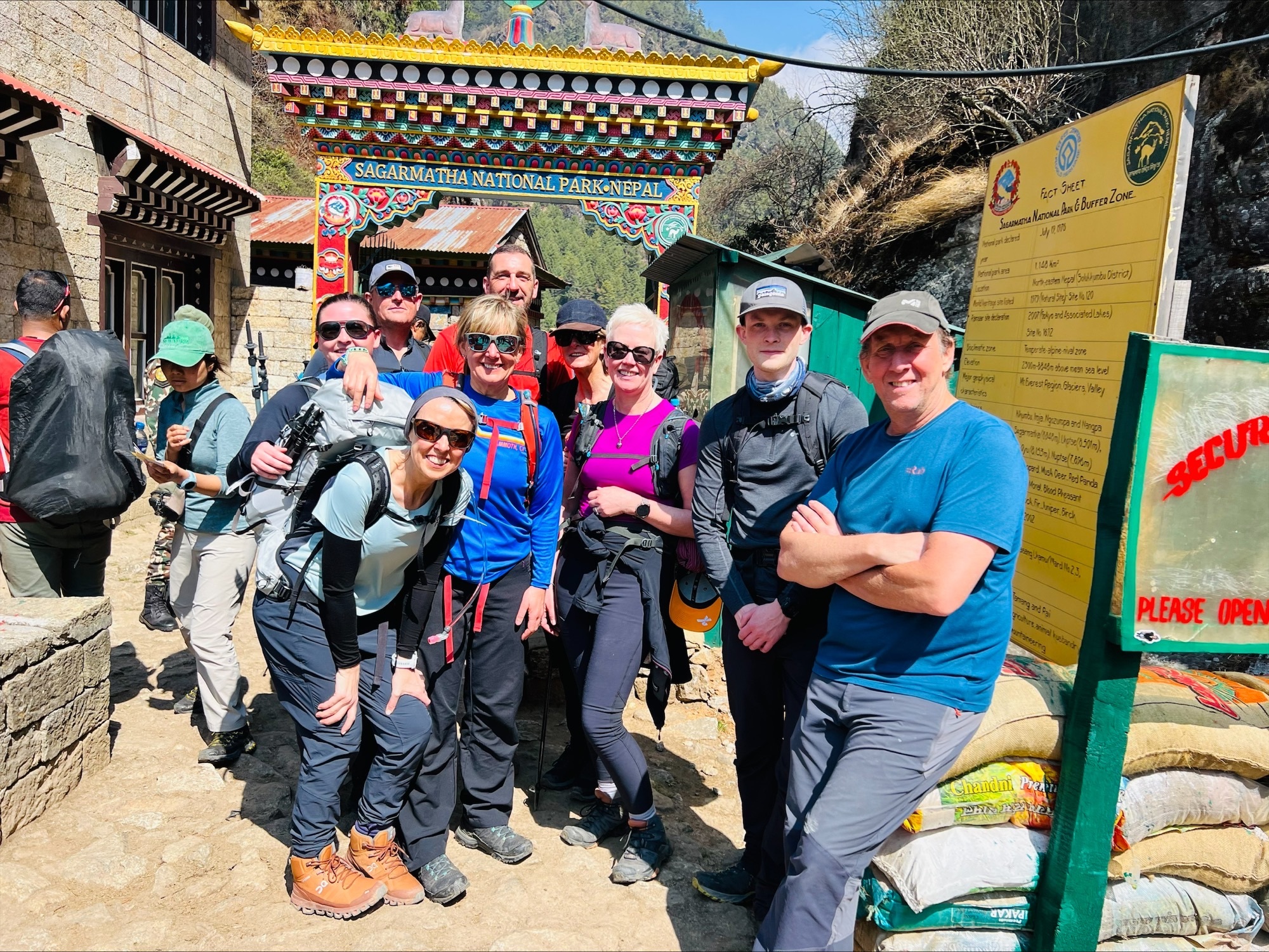My priorities shifted almost immediately after receiving a cancer diagnosis in 2016. Prioritising my physical and emotional health and learning to enjoy the small but significant things in life, I put my family and friends first. Everest Base Camp hiking is by no means a “little thing in life,” but it was a chance for an epic adventure that I was never going to regret.
The Everest Base Camp trek that had been postponed by Covid in 2023 was decided upon by my friend Lorraine, who admits to being a bit of an adrenaline junkie. Lorraine persuaded me to join her, and as a Cancer and Rehabilitation Exercise Specialist, this trek was precisely the kind of Exercise Prescription that I urged my clients to embrace. So much so that I invited one of my clients, Debbie, along with me on my once-in-a-lifetime trip!
Please click the link I have provided below to view Debbie’s fitness preparation for Everest Base Camp.
Click here to see an example of one of Debbie’s workout plans
Exercise Prescription (my company) prescribes clients with chronic diseases like Diabetes, Obesity, Coronary Heart Disease, etc., as well as patients who are at all stages of pre and post cancer treatment with a specific dose of exercise. This dose includes the intensity, frequency, type of exercise, and duration, all of which are specifically tailored to my client’s needs. After five years in remission, I had just received my consultant’s discharge, and what better way to celebrate life than to put what I believed into practice?
Rather than tell you everything you should know about getting ready for Everest Base Camp, I have jotted down a few things that I wish I had been told before I completed my trek. I hope it helps you prepare a little better for your wonderful adventure!
On day one, you descend before ascending, which is a complete brain melt!
The distance between Kathmandu and Lukla airport is 2,800 metres. After a hearty breakfast at the Lukla teahouse, we began our descent to Phakding, which is 200 metres lower than Lukla. On this portion of the trail, there are both ascending and descending steps, but most of the steps are descending.
Everyone in the group realised that we would have to walk up these steps on the last day of our trip, when we would likely be filthy and exhausted, but the scenery is so breath-taking and the knowledge that you are almost home keeps you motivated. The trek to Phakding will take approximately three hours to traverse 13 kilometres (8.8 miles).
During the first few days of our trek, we wore shorts.
We arrived in 28 degrees in Kathmandu. April to early June and September to October are typically the busiest months to visit Everest Base Camp.
We began our trek on the 28th of March from Lukla wearing leggings, but carried shorts so we could change into them as the weather warmed. However, despite appearances, evenings and nights were still very chilly.
We only saw snow on one day of our trek to Basecamp, but because there was so little snow, the views were magnificent.
In the lower regions of the trek, we began each day with our down jackets and warm trousers on, but we had to remove them because it was too warm to continue wearing them as the day progressed.
Please click on the link below for a comprehensive inventory of the items you should bring to Everest Base Camp.
Click here to see the recommended packing list for your trek
Practise and perfect your packing well in advance of your trip.
Please heed my recommendation and prepare no more than 15 kilogrammes in your kit bag and backpack. Before leaving, practise packing your luggage and weigh your daypack with at least two litres of water inside. Packing and making wise judgements about what to bring and what to leave behind will be one of the most difficult aspects of the hike.
We were fortunate enough to be able to leave our extra belongings at our hotel in Kathmandu, so a foldable bag was of great assistance. Split the toiletries and first aid supplies with your hiking companions. Trust me, you don’t want to end up carrying unnecessary items that you won’t use.
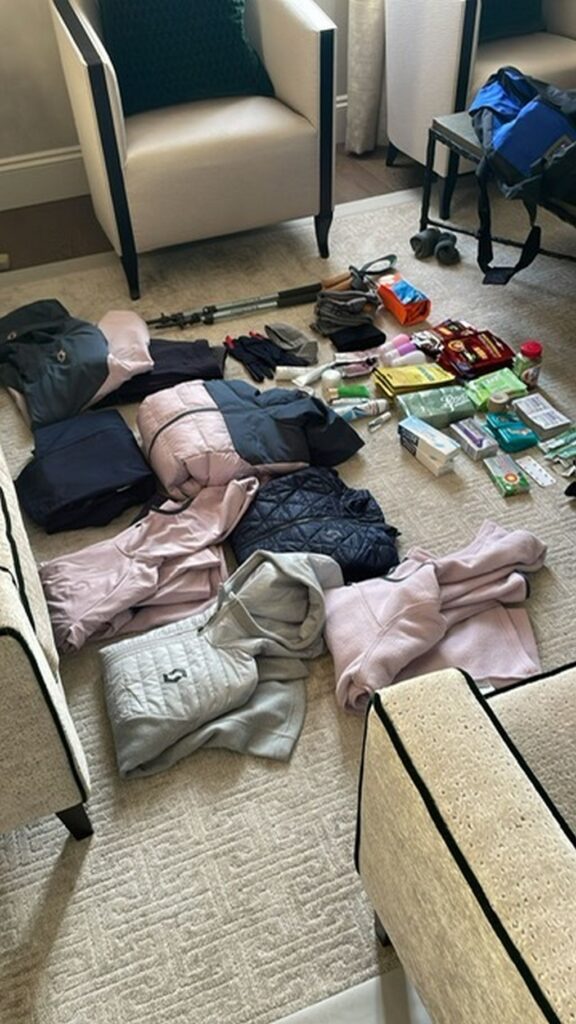
You do not need to be the strongest or fittest individual in the group.
It is normal to be frightened into believing that you must be an Iron Man in order to reach Everest Base Camp. The reality is that you do not. If you can walk up and down a hill for 3 to 6 hours per day while carrying a daypack, you will be absolutely fine! If you are travelling with a tour group like Adventure Peaks, Porters or Yaks will transport your heavier kit bags, leaving you with only your water, snacks, phone, and warm clothing to worry about.
Your greatest obstacle is acclimating to higher altitude, which has no (as evidence suggests) correlation with your fitness. In fact, the slower you move, the greater your likelihood of reaching the top. There were individuals in our group who were not in peak physical condition, yet they smashed it. Consider increasing your training frequency, duration, and intensity three to four months before your departure.
It is surely more achievable than you believe, but please do not completely disregard your fitness, as it will affect how much you enjoy this adventure. Consider that gradual and steady wins the race.

It will cost more than you have planned for.
I am certain that most of you who intend to go on this walk are aware that the higher the altitude, the higher the cost. Everything must be transported up from lower altitudes by porters (our superheroes) or flown in from Kathmandu via helicopter. In Gorak Shep, a can of crisps can cost as much as £4.00. Café 4410 was the coolest café in Dingboche, where I purchased a coffee and cake for £6.00 per person. The coffee and cakes were delicious, though, and such a treat after a long day of hiking!
It was tricky to exchange money!
We had trouble locating functioning cash machines in Kathmandu, to be honest. Some of the teahouses will gladly exchange U.S. dollars for Indian Rupees, but the exchange rates are not particularly favourable. Kathmandu’s ATMs charge extremely high fees.
We brought about $600 in U.S. currency but still needed more; we spent about $800 travelling from Kathmandu to Everest Base Camp and back, but that included 33 beers in Lukla that four of us and our Sherpas shared to celebrate reaching Everest Base Camp. The Sherpas’ definitely reached their peak performance in the drinking stakes too!
We had the foresight to exchange more money in our hotel the night before we began trekking, and we shared our cash if anyone required more until we returned to Kathmandu.
I imagine it is difficult to maintain the ATMs consistently on the mountainside.
The simple solution is to carry cash up the mountain.
Additional Items for which you will require money:
Charging your smartphone or portable battery pack
Paying for WIFI, but if you are willing to share your WIFI code with peers, it is cheaper for you to use it individually.
$450 for helicopter flights just in case you miss your departure flight or wish to return to Kathmandu more quickly from Lukla airport, where flights are frequently delayed.
On the route to EBC, you can pay for a hot shower or a bucket of hot water. We had only heated showers up until Namche Bazaar. We also used them in the common rooms where there was a fire, so we could stay warm with wet hair.
Snacks
Toilet Paper and Water Bottles
Porter’s tips were $150 each, split among all porters and the Yak guide, who definitely earned it.
Withdraw the required funds in Kathmandu, and you won’t have to stress while on the mountain.

Purchasing the proper Equipment is crucial; if you go cheap, you will regret it!
You can find numerous YouTube videos of people advising you to buy inexpensive gear in Kathmandu, but even that isn’t necessarily cheaper than at home; the products are typically replicas, and you need technical gear that can keep you warm, cool, or dry.
We rented our sleeping bags from Adventure Peaks UK tour operators, which is an enormous money saver if you are only going to EBC for two weeks, but don’t forget to include them in your luggage allowance as they usually don’t arrive until a week before your departure. We also received a free Kitbag from Adventure Peaks, which eliminated the need to purchase luggage and ensured that everyone had the same weight limit.
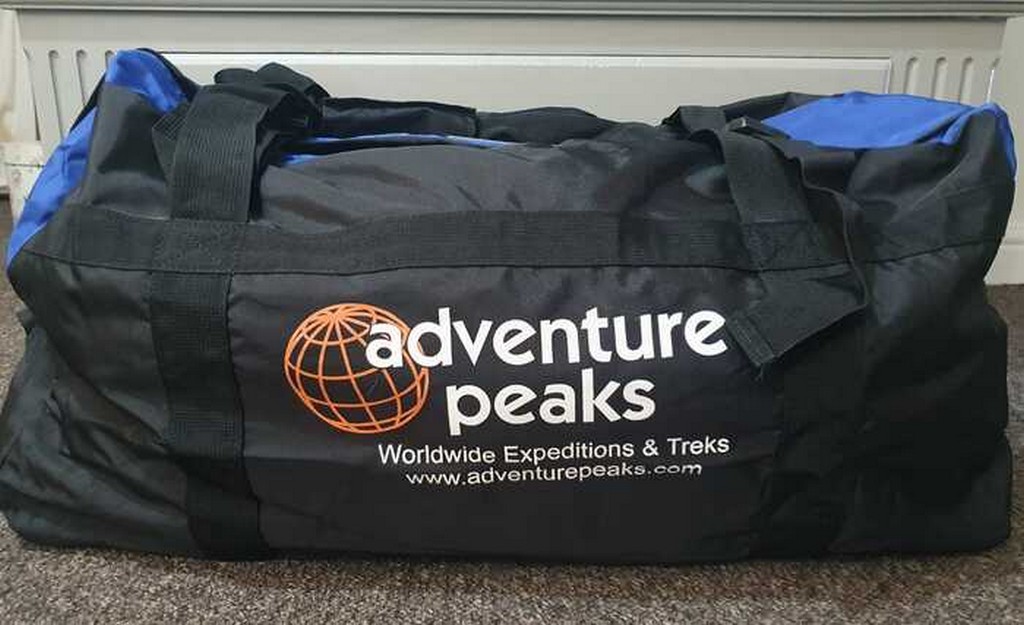
The toilets are holes in the ground.
In all honesty, I’d rather urinate behind a bush than use some of the restrooms on the walk. I’ve used some filthy toilets in my time, but the ones on the route to Everest base camp were by far the filthiest; Gorak Shep was the worst. It felt like we were a mile away from our loo, and it was bitterly cold, so we snuck a bucket from our teahouse into our room. Obviously, we emptied and cleansed it before returning it! LOL
Make sure you have toilet paper, wipes, and hand sanitizer in your daypack, and don’t forget to rinse everything away with the provided containers of water.
If you need additional toilet paper, you can purchase it at most tea houses, but the closer you get to EBC, the more expensive it becomes.
We were advised to consume 4-5 litres of water per day, as it aids in coping with the altitude; consequently, everyone took advantage of the frequent bathroom breaks.
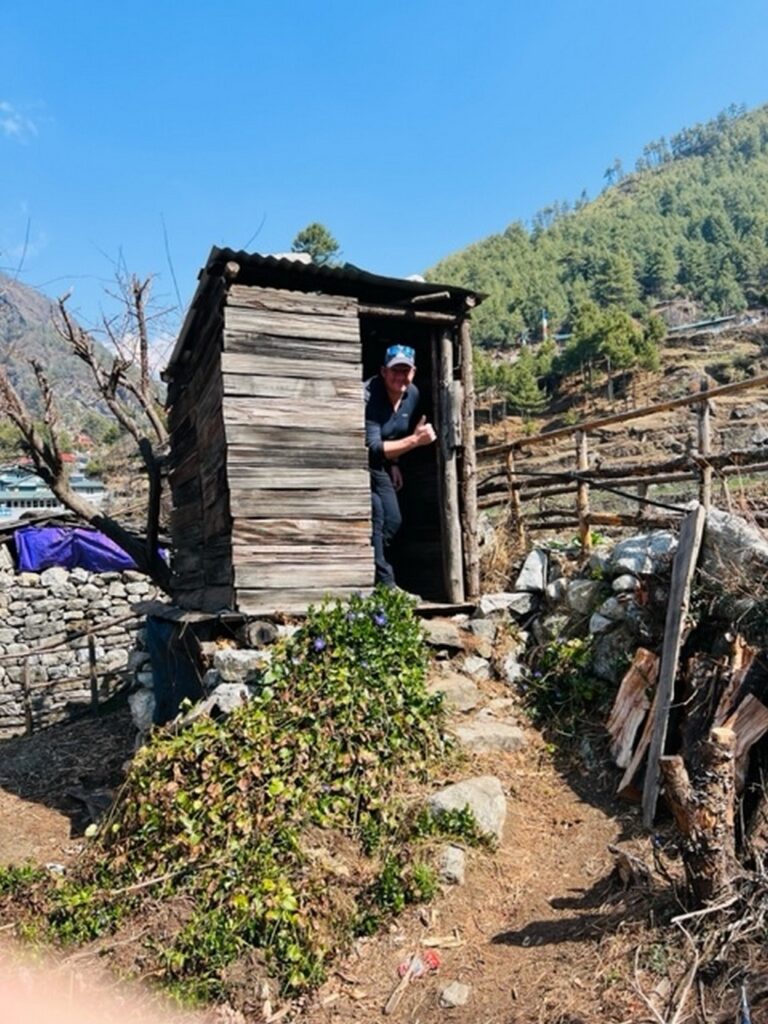
Flying to Lukla is known as the most dangerous airport in the world!
Most EBC treks begin in Lukla, which is frequently referred to as the world’s most terrifying airport. The famous flight was exhilarating and only lasted about 30 minutes at our small airport in Ramechhap. This airport’s security consisted of me walking behind a curtain and having a security guard manually search my luggage. I felt like I had travelled back in time! It was lovely and scary all at the same time.
We were extremely fortunate with our flights; I believe it helped that we arrived in Kathmandu on March 27, which felt like the first week of the season.
If you are with a reputable tour operator, such as Adventure Peaks UK, you will typically be on one of the first flights out.
If the weather is unsafe, airlines limit the number of flights into and out of Lukla, and you may be required to wait until the next day.
If you do not have spare days before your flight home, you should keep $500 on hand for a helicopter ride back to Kathmandu. You do not want to miss your flight. We booked a helicopter to avoid the incredibly bumpy 5-hour minibus journey from Ramechhap airport to Kathmandu. The thought of our spa treatments at the Hyatt (not where we stayed) was the greatest motivation (I would highly recommend it).
Be as prepared as our tour guides advise, and allow yourself a few days of wiggle room at the end of your trek to ensure that you can catch your flights home.

Dogs, Dogs, Dogs
I am a very light sleeper, and NO ONE has ever mentioned that in every tea house we stayed in besides Gorak Shep, the local canines slept all day and barked ALL NIGHT LONG!
You can plainly hear your neighbours chatting, snoring, and dogs barking, and it feels like you are sleeping in a tent due to the thin walls, which are typically made of plywood. I would strongly suggest bringing earbuds, earplugs, or Bose sleep buds to reduce the likelihood of sleep deprivation. I had severe headaches due to lack of sleep and the hard pillows in our rooms, but I purchased ear plugs and substituted my pillow with my down jacket halfway up to basecamp, which helped tremendously. In addition, my buddy Lorraine massaged my shoulders, and I brought along a mini-Thera-gun (massage gun) that everyone in our group used on their calves and glutes at some point during the hike.
Diamox: Yes, or No?
Everyone of us as trekkers asked if we should use Diamox or not because we had read that it can help the body acclimatise. I am not a doctor or claim to be an expert on the benefits of Diamox, but what I do know is that it is classed as a diuretic, is not licenced in the UK, and is not prescribed to help someone adapt to high altitudes.
There were several members of our group who bought it privately, and the UK tour guides from Adventure Peaks UK had a stash available for anyone wishing to take it.
The advice that our trekking companions had been given before taking Diamox was:
Take it at home for a few days before you travel so you can make sure you don’t experience any potential side effects.
You should take half a pill in the morning and half a pill in the evening.
Take it for the whole of your expedition, even if you are not experiencing any side effects.
It will make you urinate more frequently.
You may have pins and needles in your fingers, toes, or face.
I am not someone who likes to take medication and am reluctant to put anything into my body on top of my Tamoxifen ( as a part of my breast cancer treatment), but because I was suffering from headaches due to sleep deprivation, I took Diamox for 5 days in the morning only, and it seemed to help, even if it was the placebo effect!
The best advice I can give you to naturally help with the potential side effects of acclimation is:
Stay hydrated, which is actually more important if you are taking Diamox. It dehydrates you, so try to consume 3–4 litres per day.
Pace yourself, Dave Our UK guide was excellent at setting the pace to ensure we didn’t stop frequently but that we got there at a safe and effective speed. He has summited Everest twice, so he really does know what he is talking about!
Eat plenty of food. The food on offer was unbelievably good, and the choices were vast. We were expecting garlic soup at every stop and were delighted with our menu choices. I think I overdid it on the eggs, though, and still struggle to eat them 10 weeks later.
If you are unlucky enough to have the symptoms of Acute Mountain sickness, the usual course of action is to take you back down to a safe altitude.
Dave, our guide from Adventure Peaks UK, was watching us all very closely each day to see what we were eating, drinking, and even made sure we were not withdrawing so he could make any recommendations to alleviate any fears we had or monitor how we were feeling both physically and mentally. He was our other superhero. It’s a tough gig when you are keeping an eye on eight trekkers at once.
Sleeping bag tips.
Carrie, a member of the Adventure Peaks staff, gave me the best sleeping bag advice I’ve ever received:
Rent a sleeping bag with a hood to ensure the proper quality and tog rating. Adventure Peaks hires them for £80 per person; delivery is included.
Dressing and disrobing inside your sleeping sack keeps you warmer for longer.
You won’t regret purchasing a fleece liner for your sleeping bag.
Fill your Neoprene water bottle with heated water at night, place it in a sock, and use it as a hot water bottle; in the morning, you will have drinking water.
Brilliant! Place your electronics—phone, GoPro, iPad, etc.—at the base of your sleeping bag at night to prevent them from chilling.
The good news is that all of the teahouses in which we stayed provided us with extra-thick duvets, which we placed on top of our sleeping bags to keep them as warm as possible.
A warm sleeping bag is essential for staying warm and getting a decent night’s sleep. The high mountain regions can become extremely cold, so a sleeping bag filled with duck and goose down is essential.
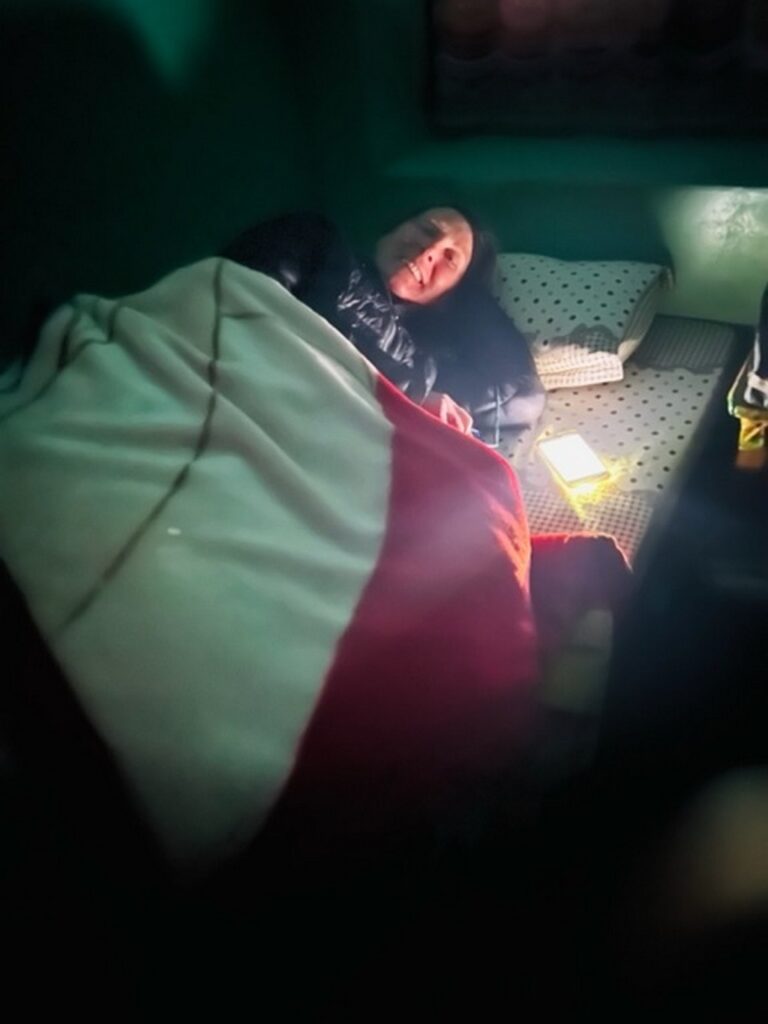
And lastly
The Everest Base Camp (EBC) excursion was a breathtaking high-altitude trek through the Nepalese mountains. I was unprepared for the awe-inspiring scenery and the one-of-a-kind cultural experience I had while exploring the challenging trekking routes around the world’s highest peaks, including Mount Everest. Among my most memorable experiences were:
The journey to Lukla airport
The suspension bridges.
Namche Bazaar was a crazy, bustling, and completely unexpected city.
Visiting the Buddhist monasteries
The guided tour of Kathmandu and witnessing their ceremonial funerals, cows walking through the streets, and exquisite paintings by local Buddhists made with a single cat’s hair!
Understanding the Sherpa culture and way of life, including prayer flags, prayer wheels and mani walls.
The Everest Observation Point and museum
Amazing views of the world’s tallest peaks, including Mount Everest (8,848.86m), Mount Lhoste (8,516m), and Mount Makalu (8485m).
I would highly recommend this as a huge bucket list item; there’s nothing quite like touching that massive boulder at Basecamp and experiencing that overwhelming sense of achievement!

